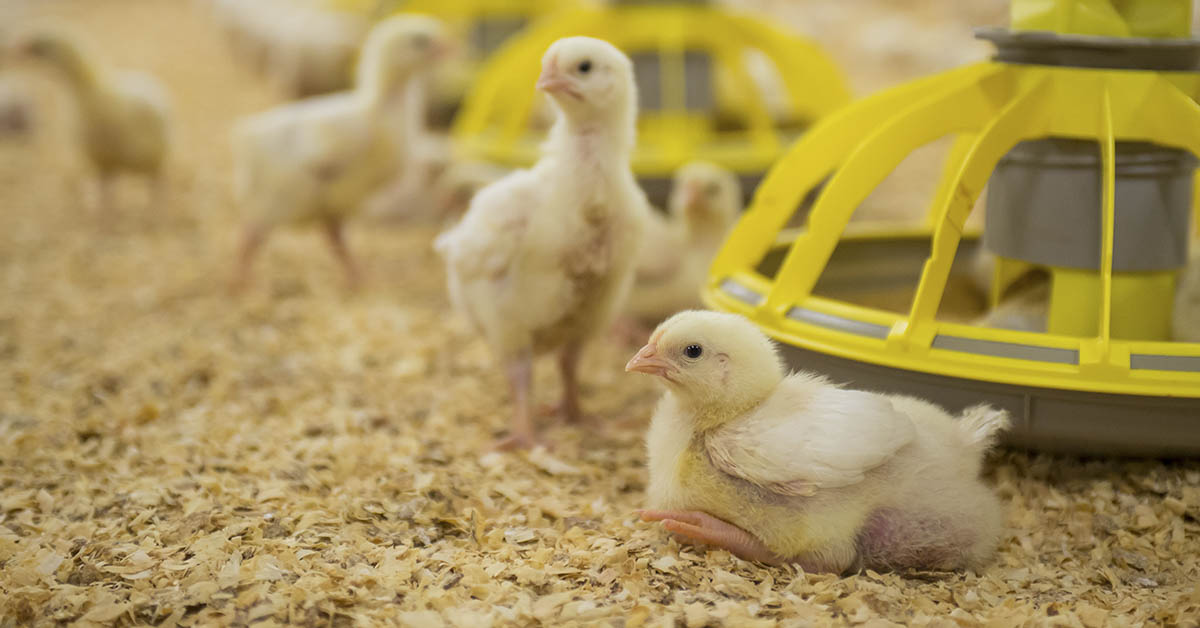Chicken is a $30 billion industry in the United States today. Chicken farming, however, didn’t start out that way. Back in 1923, most people had chickens at home for eggs. When they reached an age where their egg production dropped off, they would then use those chickens for meat. Delaware homemaker and farmer Cecile Steele was one of those people. When a delivery error stuck Cecile with ten times the number of chickens she ordered, she made some decisions that changed the chicken industry forever.
Cecile Steele: The Accidental Founder of the Modern-Day Chicken Industry

One day in 1923, the local hatchery made an error. They were supposed to send 50 chickens to Cecile Steele, a farmer in Ocean View. Instead, however, they sent her ten times as many. That’s right: The hatchery sent her 500 chickens. In those days, there was no way for Cecile to return the chickens, so she had to make due. She hand-fed and watered the baby chickens in a small 256-square-foot barn. (1)
Of the 500 chicks, she managed to raise 400 of them into adulthood. Of course, she could not consume all of the eggs and meat that these chickens would produce, so instead, she sold the birds. This was quite profitable, earning her what would be equivalent to $11 per pound today. Considering each chicken weighed about two pounds, that is a pretty decent profit. That’s when she decided to ramp up operations even further, unknowingly changing the chicken industry forever. (2)
Read More: Chickens have gotten ridiculously large since the 1950s
Expansion of The Chicken Industry

Cecile’s husband soon after quit his Coast Guard job to help Cecile as her chicken business kept on growing. Within three years, the couple was raising 10,000 chickens. Most of their chickens were being raised primarily for meat. Before this, most chickens in America were being raised for eggs, with meat being more of an afterthought.
As the Steele family’s success made the rounds, more farmers began switching to their method and began raising chickens primarily for meat rather than eggs. The chicken industry has never been the same since, with chickens being raised for meat and those being raised for eggs becoming two separate industries.
Just The Right Time

If this accident by the hatchery had happened a few years earlier or a few years later, the same result might not have occurred. 1923, of course, was the roaring twenties. This was a time of economic growth and prosperity in the United States. People had money to spend on meat, whereas, in just seven years, they would not. Along with this economic prosperity came advancements in agricultural practices, refrigeration, and transportation. Chain grocery stores cropped up, and more and more financing went into farming. All of this led to a cycle of chicken being more available, along with consumers being able to afford it, causing a big boom in the chicken industry.
Read More: What Costco Doesn’t Want You to Know About Its $4.99 Chicken
Nutritional Changes

Mass agriculture also changed in the early 1920s due to nutritional discoveries. The discovery of Vitamin D really changed the chicken farming industry. Before discovering the sun’s vitamin, farmers lost many chickens every winter from rickets. The chickens, naturally, were spending most of their time inside and therefore weren’t getting enough vitamin D from the sun. After the discovery, farmers began fortifying their chicken feed with vitamin D. This meant that they could raise large flocks of chickens all year round.
The Evolution of Chicken

Since then, chicken has become the most popular meat in the United States. It accounts for 44% of meat consumption in the United States alone. Not only has its affordability made it an easy option, but it has also benefited from its popularity as being the healthier of the meat choices—all of this from one simple mistake 100 years ago.
Read More: Why You Should Never Buy a Rotisserie Chicken From Walmart
Sources
- “How a shipping error 100 years ago launched the $30 billion chicken industry.” VOX. Kenny Torrella. February 10, 2023.
- “1923 shipping mistake led to Delmarva chicken industry.” Delaware Online. Ken Mammarella. January 13, 2015.

